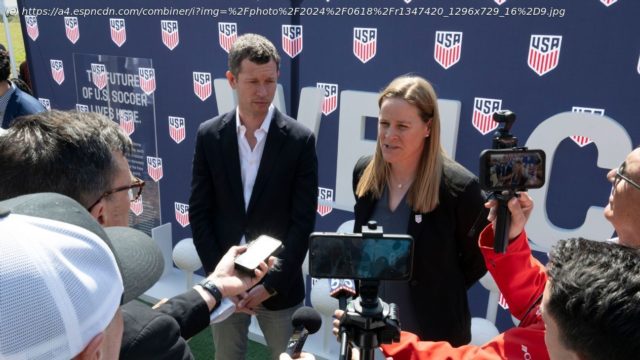The 2016 Copa America Centenario was extremely profitable for U.S. Soccer. So why will this year’s tournament be far less lucrative for the hosts?
On June 20, the United States will officially begin hosting the Copa America for the second time, having previously hosted the 2016 Copa America Centenario. Just like eight years ago, a Copa America on U.S. soil figures to be one of the biggest — and most lucrative — soccer spectacles on the calendar.
Reigning Copa and World Cup champions Argentina — with one Lionel Messi in tow — will compete, as will five-time World Cup champions Brazil. The U.S. men’s national team will take part as well, which should raise the team’s profile ahead of the 2026 World Cup, which the U.S. is co-hosting with Canada and Mexico.
But unlike the 2016 edition, which funded the U.S. Soccer Federation’s activities for the years that followed, the Copa America this time around will offer a far smaller financial benefit to the host country.
In 2016, U.S. Soccer cleared around $75 million from hosting the Centenario, based on federation financial disclosures, as well as the recollections of multiple federation sources, both past and present. Additionally, Soccer United Marketing, or SUM, the marketing arm of Major League Soccer, won the bid to sell sponsorships for the tournament and helped U.S. Soccer with ticket sales, pumping even more money into the American soccer ecosystem.
U.S. Soccer’s cash on hand ballooned from $65.4m at the end of the 2016 fiscal year — which ended on March 31, 2016 — to $104.6m at the end of the 2017 fiscal year. That cash infusion from the Centenario meant U.S. Soccer could operate on a deficit, spending more than it was bringing in for years afterward.
This time around, however, U.S. Soccer can’t expect the same influx. According to federation sources, as well as the federation’s 2024 Book of Reports, the U.S. is receiving $10m, plus a 5% « sanctioning fee » on ticket sales (after sales taxes and facility fees). Sources expect that percentage to amount to between $10-15m, making the federation’s total haul for hosting the Copa America will between $20-25m.
So, why the much smaller windfall? In large part, it’s down to the evolving state of international soccer politics at the confederation level.
The hosting rights for the 2016 Centenario were first awarded to the U.S. in May of 2014, and a year later, the respective leadership ranks of Concacaf and CONMEBOL were cleared out by the U.S. Department of Justice’s investigation into FIFA corruption.
Jeffrey Webb and Jack Warner — then the current and former presidents of Concacaf — were among those charged with racketeering and bribery offenses. Chuck Blazer, the Concacaf general secretary, had already pled guilty. Nicolas Leoz and Eugenio Figueredo, both previous presidents of CONMEBOL, were also indicted. Additional indictments were issued to Webb’s successor, Alfredo Hawit, and CONMEBOL president Juan Angel Napout.
The firm that owned the tournament’s media rights was also wrapped up in the legal scandal, having doled out what the U.






